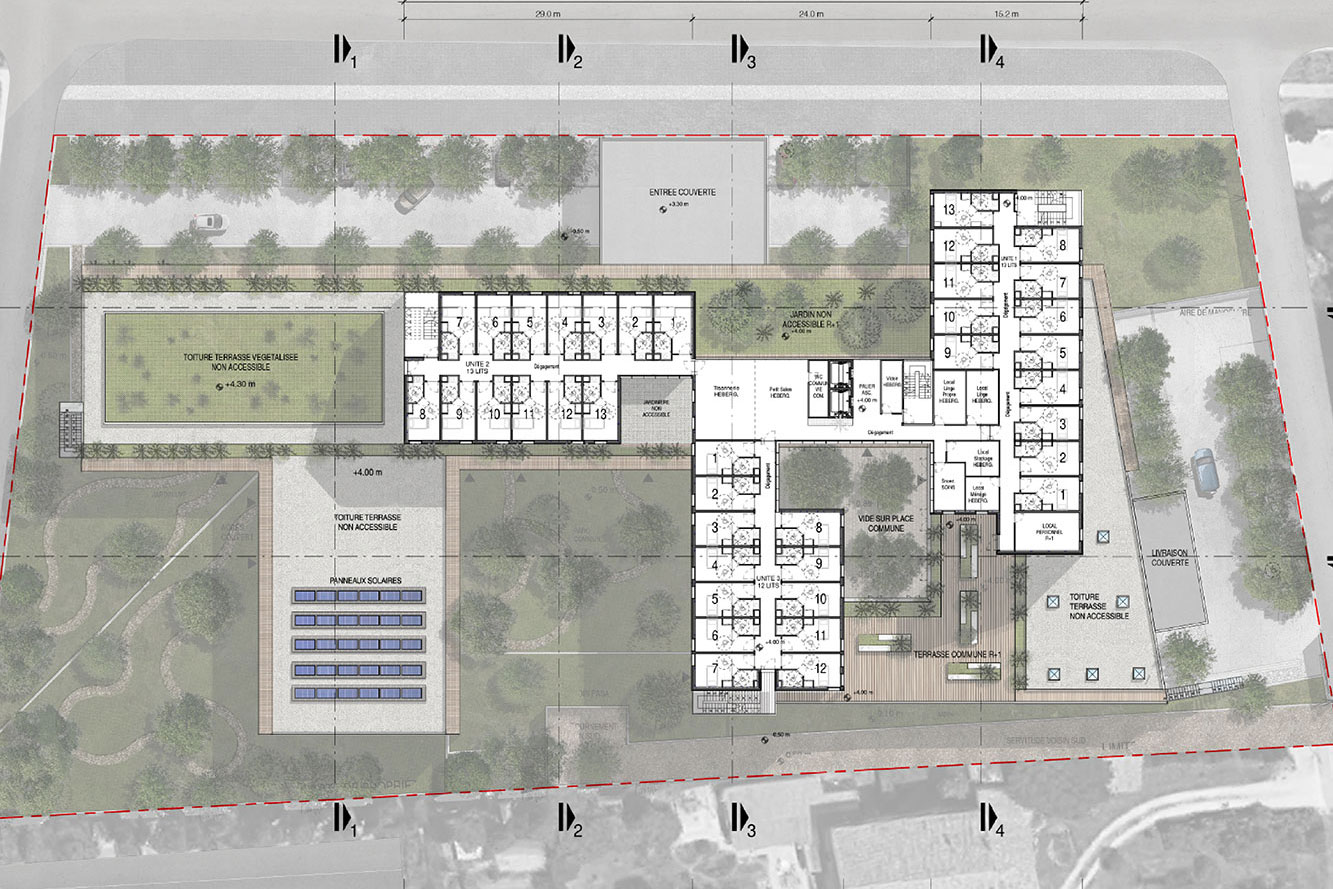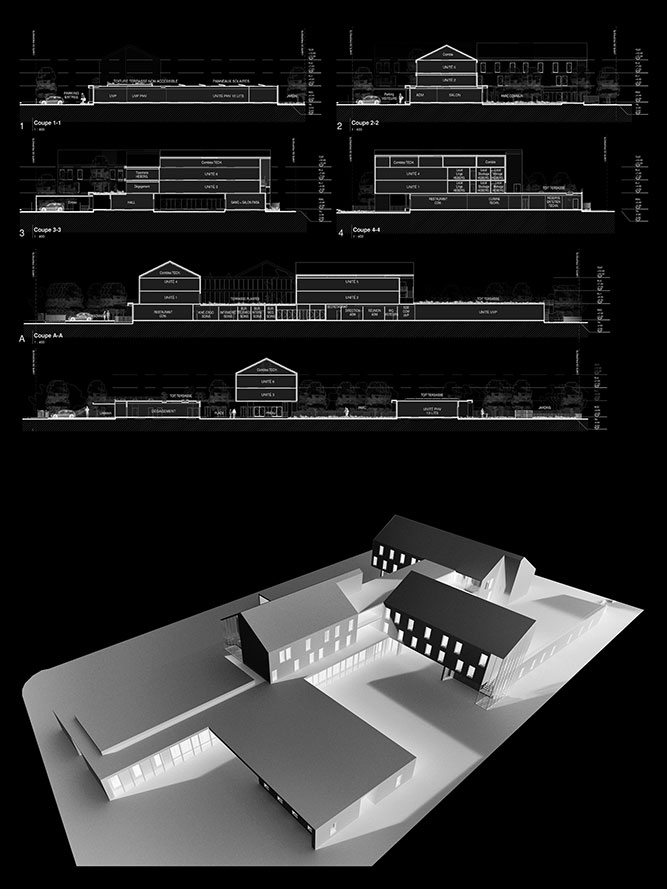PUBLIC FACILITIES
COMPETITION EPHAD
Program: Creation of 120 beds – EPHAD
Scope: General design
Project Director: Groupe SOS
Location: Avignon, France
Status: Competition 2018
Budget: 1 300 000€
Area: 5 530 m2
This 120-beds EPHAD is designed to meet two objectives. The first objective, which is obvious, is the efficiency of the establishment in its operation. It must be adapted to the users (residents, public, and staff), and allow the optimization of the functioning of each service while rationalizing the movements of the agents of the site.
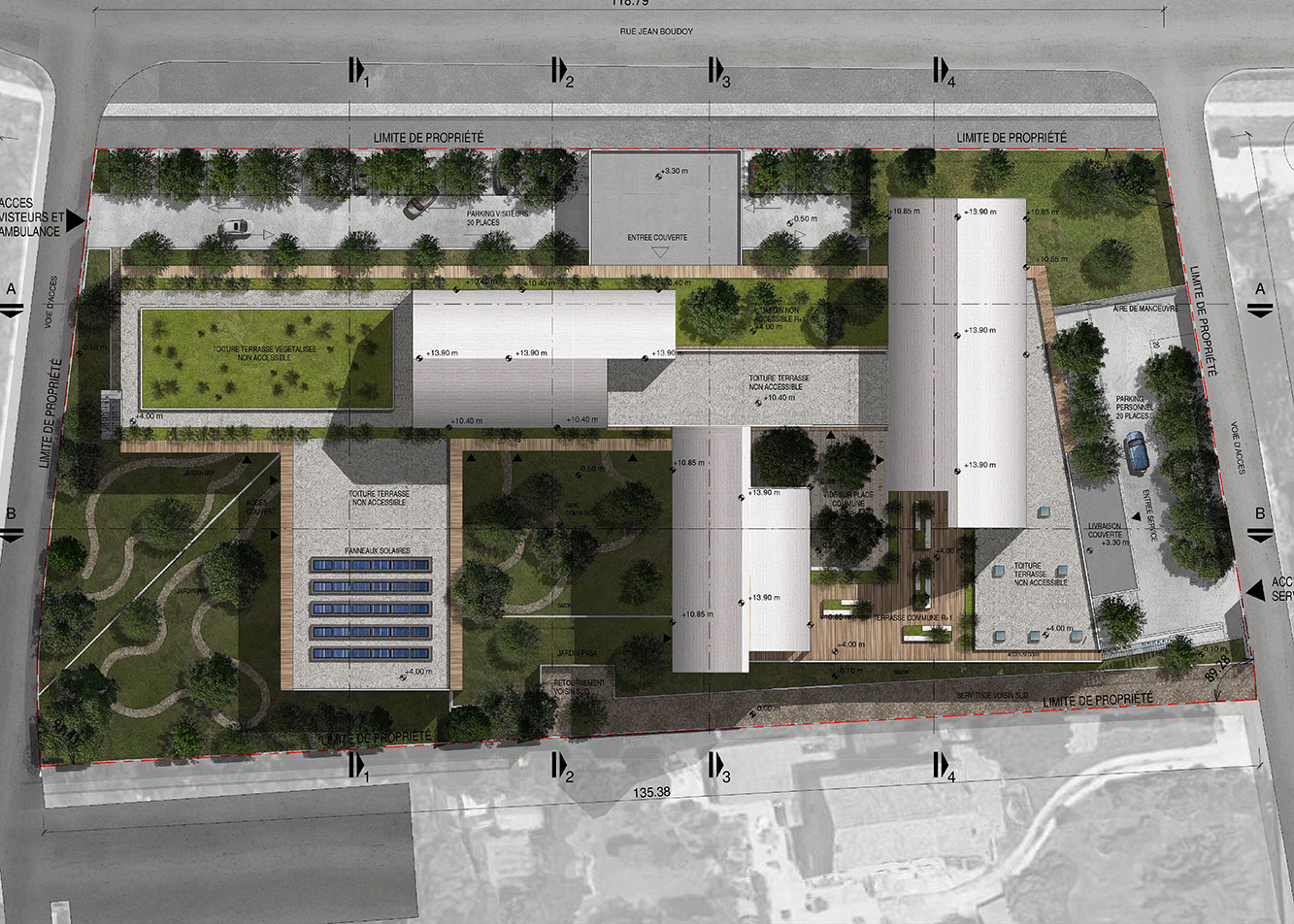
PUBLIC FACILITIES
COMPETITION EPHAD
Description: Creation of 120 beds – EPHAD
Mission: General design
Project Director: Groupe SOS
Location: Avignon, France
Status: Competition 2018
Budget : 1 300 000€
Size : 5 530 m2
This 120-beds EPHAD is designed to meet two objectives. The first objective, which is obvious, is the efficiency of the establishment in its operation. It must be adapted to the users (residents, public, and staff), and allow the optimization of the functioning of each service while rationalizing the movements of the agents of the site.

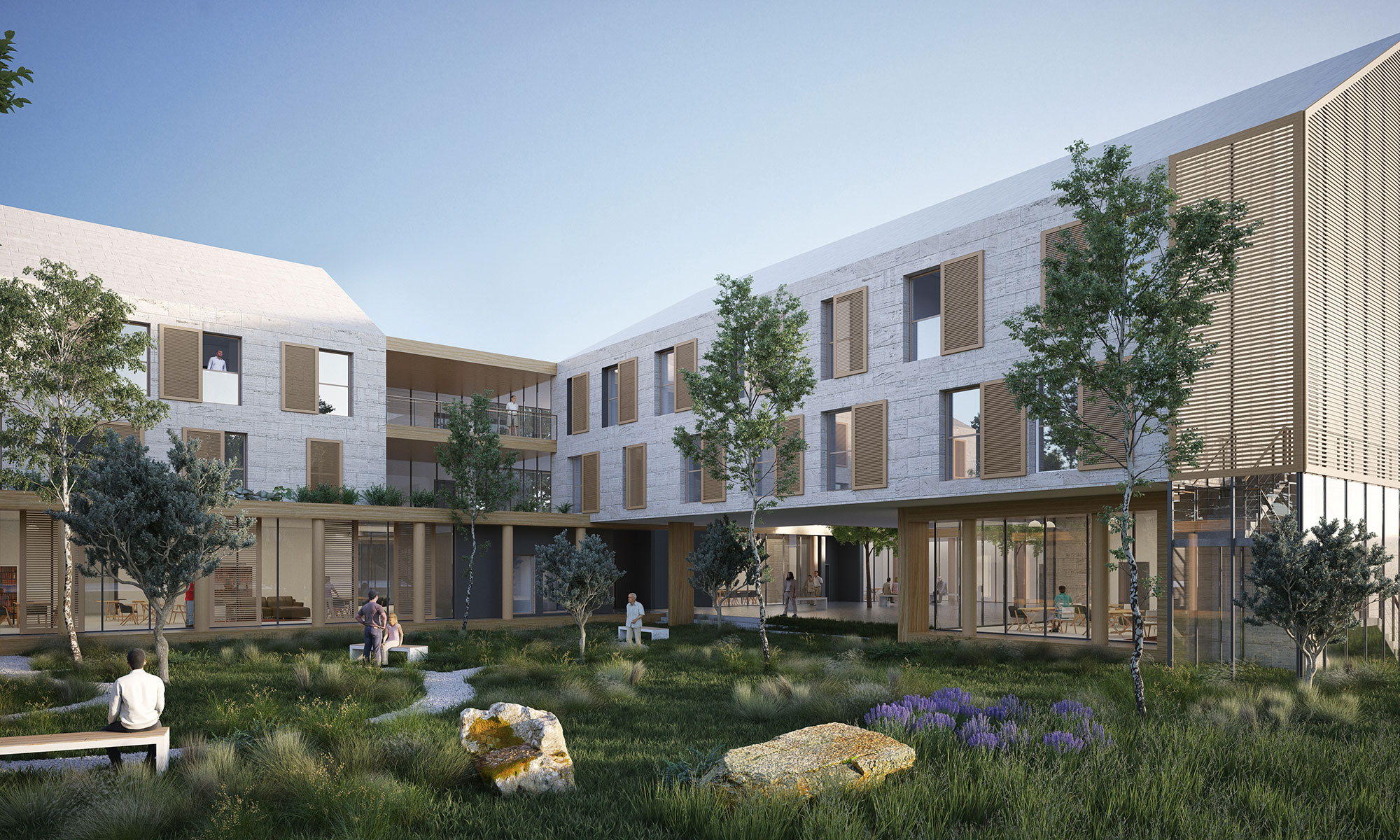

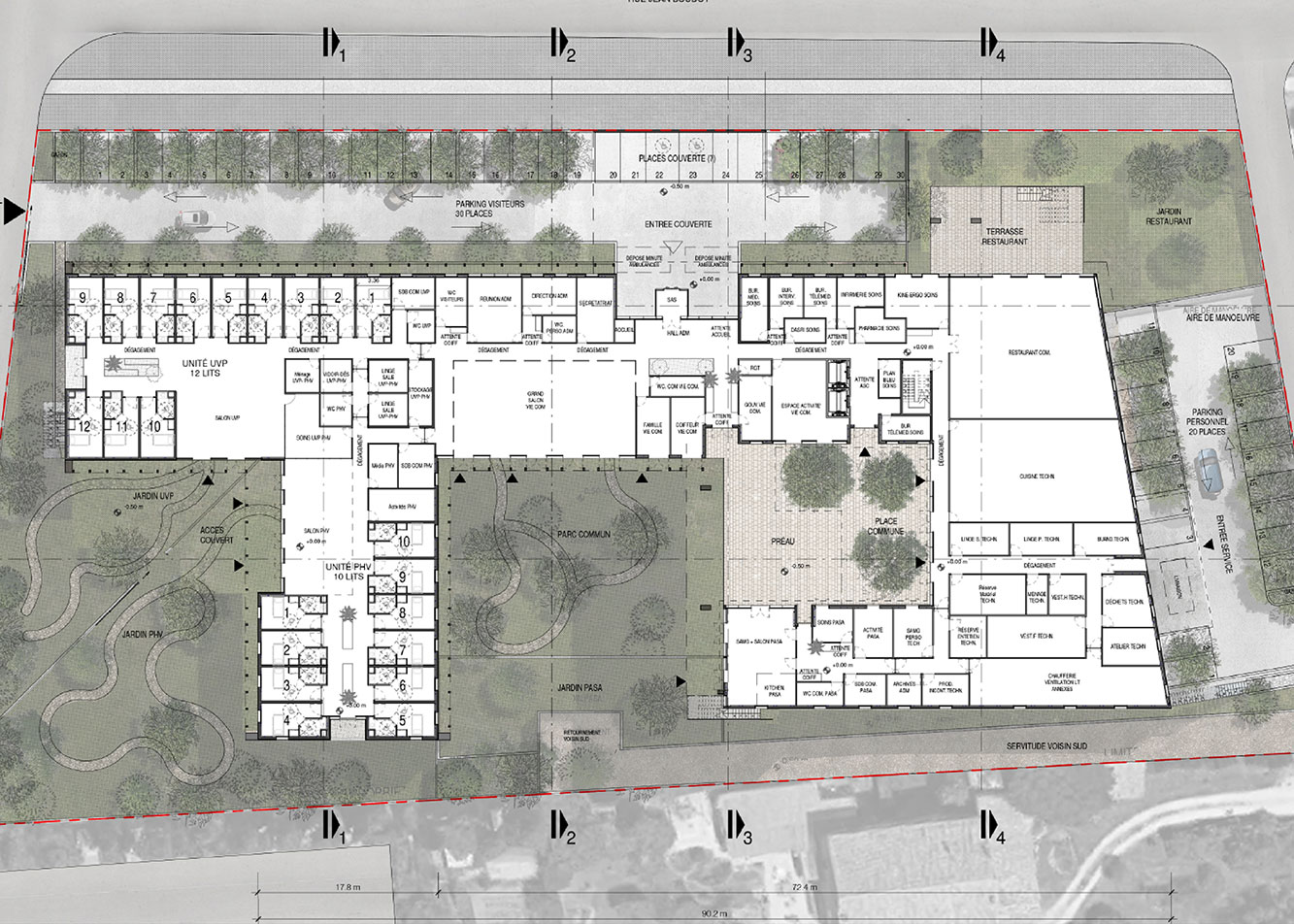
The second objective is not to create an EHPAD but a real residence, a place to live, generating sociability, allowing the residents to live together or with more independence but above all with dignity, humanity and serenity. The real challenge of this project is to create a place to live. To achieve this, the aim is to recreate a “microclimate” of urbanity around the common square, while maintaining the comfort and serenity provided by large green spaces. This is to combat the idea that the residents of the establishment are being excluded from society in a peri-urban area. The idea is to generate urban perspectives between the different units and around the courtyard. The city is society, it is life.

The second objective is not to create an EHPAD but a real residence, a place to live, generating sociability, allowing the residents to live together or with more independence but above all with dignity, humanity and serenity. The real challenge of this project is to create a place to live. To achieve this, the aim is to recreate a “microclimate” of urbanity around the common square, while maintaining the comfort and serenity provided by large green spaces. This is to combat the idea that the residents of the establishment are being excluded from society in a peri-urban area. The idea is to generate urban perspectives between the different units and around the courtyard. The city is society, it is life.
The project will be a low-energy building with the usual features, notably insulation from the outside, but it is also built with noble and durable materials. It is based above all on passive orientation and implantation and takes advantage of the deciduous vegetation to control the direct solar contributions on the facades according to the season. It uses the local stone in facing and the wood structure which reduces the carbon footprint of its construction. In addition, active ventilation systems and solar panels for the production of domestic hot water (DHW) are used. Underground tanks will allow the collection of rainwater for the maintenance of the project’s green spaces. The NF HQE environmental certification will be sought.
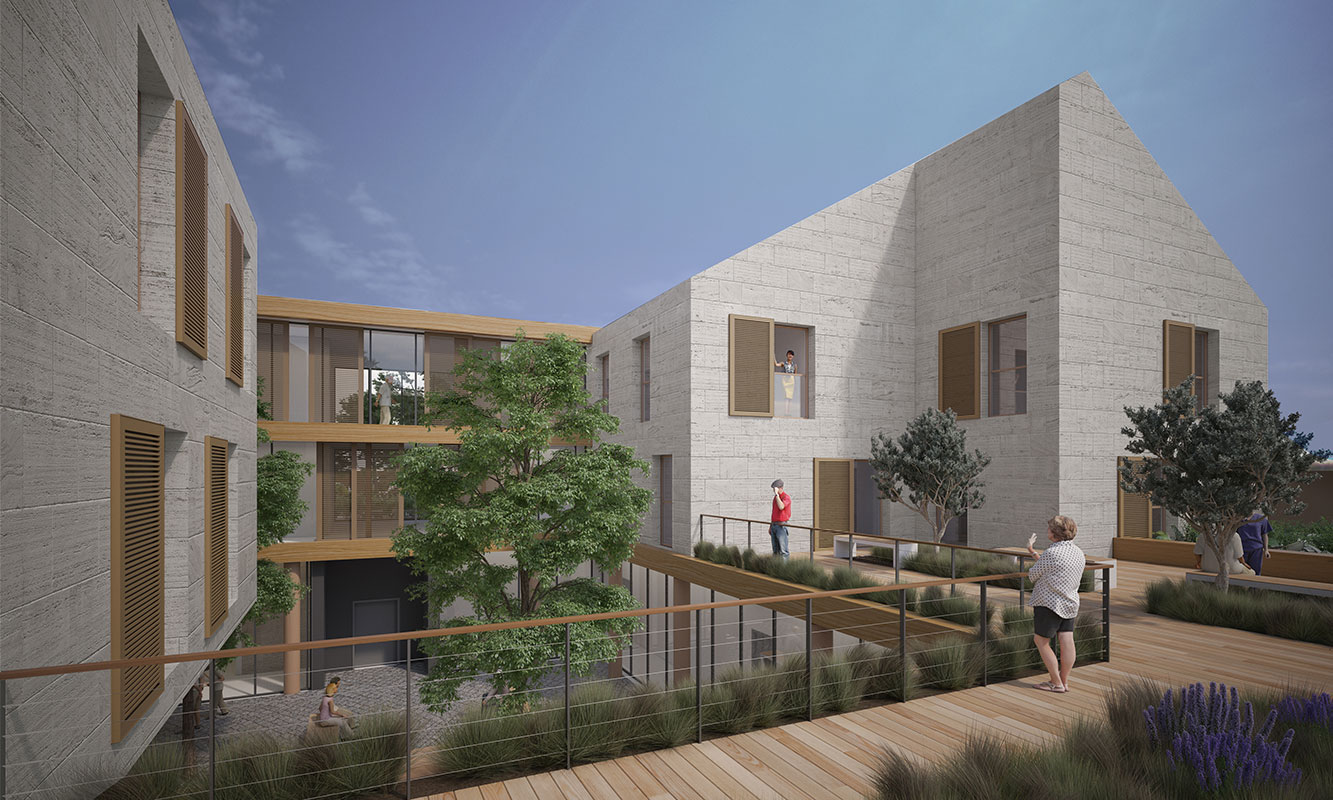
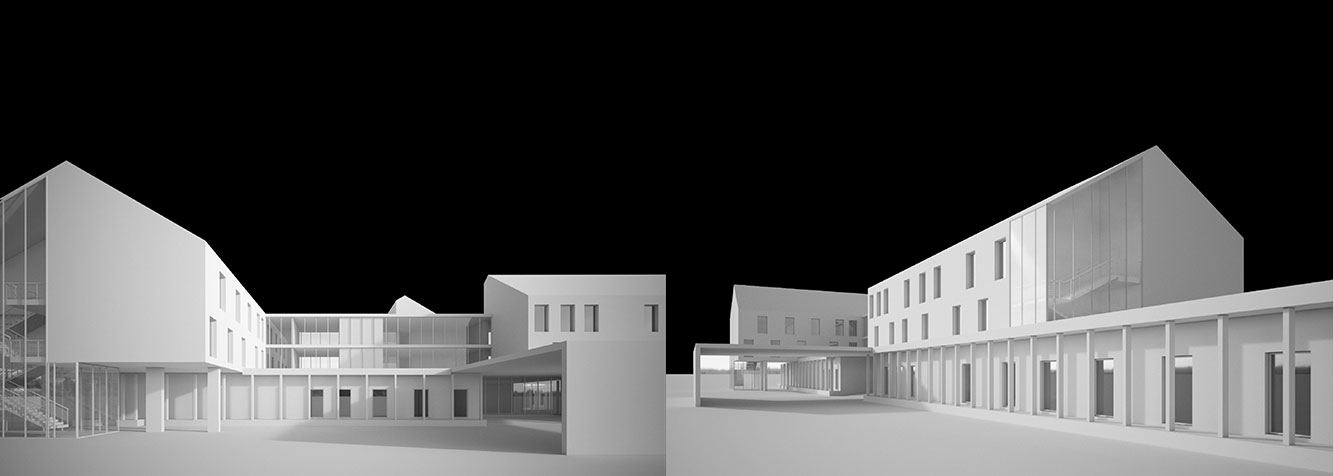


The project will be a low-energy building with the usual features, notably insulation from the outside, but it is also built with noble and durable materials. It is based above all on passive orientation and implantation and takes advantage of the deciduous vegetation to control the direct solar contributions on the facades according to the season. It uses the local stone in facing and the wood structure which reduces the carbon footprint of its construction. In addition, active ventilation systems and solar panels for the production of domestic hot water (DHW) are used. Underground tanks will allow the collection of rainwater for the maintenance of the project’s green spaces. The NF HQE environmental certification will be sought.
